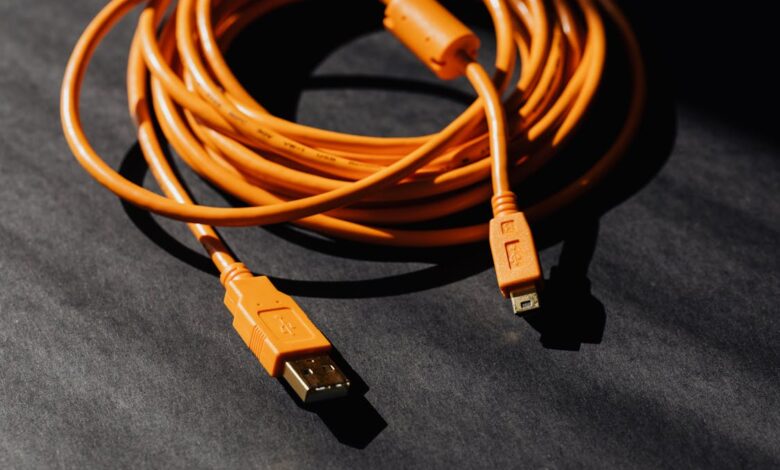Technological Advancements in Data Cabling: Transforming Connectivity

Technological advancements in data cabling are revolutionizing connectivity, offering faster speeds, excellent reliability, and enhanced security. Innovations such as fiber optics and Cat8 cables enable seamless data transmission, supporting the growing demands of modern networks. These improvements ensure robust infrastructure, which is essential for businesses to maintain efficient and uninterrupted operations in a connected world.
The Importance of Data Cabling
In today’s digitally driven world, robust data cabling has become the backbone of efficient connectivity. High-speed data transfer from residences to important organizations is in constant demand. Reliable data cabling ensures that all devices within a network communicate seamlessly, a crucial aspect for the success of any modern enterprise. Whether for structured cabling San Francisco projects or other regions, the underlying principles and importance remain significant.
Effective data cabling improves operational efficiency, and supports increased productivity by minimizing downtime. As businesses continue to rely on technology, investing in high-quality cabling infrastructure is more critical than ever. Enabling seamless integration of various technologies, such as modern telecommunication systems, cloud computing, and IoT devices, ensures businesses’ scalable and resilient digital infrastructure.
Different Types of Data Cabling
There are various types of data cabling, each suited to different needs:
- Ethernet Cabling: Widely used for local area networks (LAN), offering reliable and fast connections. Ethernet cables are easy to install and cost-effective, making them popular for small to medium-sized networks.
- Fiber Optic Cabling has a reputation for being extremely fast and long-range. It uses light signals rather than electrical ones, allowing for much faster data transmission with minimal signal loss, and is suitable for large-scale and high-speed applications.
- Coaxial Cabling: Often used for television and internet connections, especially in residential areas. Coaxial cables are durable and can support significant data, making them reliable for broadband internet and cable TV services.
- Structured Cabling Systems: These provide a comprehensive telecommunications infrastructure, supporting various hardware systems. They are designed to be highly flexible and support future upgradability without requiring complete overhauls.
Understanding each type’s strengths and limitations can help select the appropriate cabling for specific applications. Thoroughly assessing an organization’s present and future needs is crucial to ensure that the chosen cabling system will fulfill both expected and actual expectations.
Advantages of Fiber Optic Cabling
Fiber optic cabling has revolutionized connectivity by offering unparalleled speed and reliability. Fiber optics, which use light instead of conventional copper wires to transport data, offer quicker speeds and less signal loss over extended distances. This makes fiber optic cabling ideal for high-bandwidth applications and future-proofing your network infrastructure.
According to a recent report by Lightwave Online, the adoption of fiber optic technology has grown exponentially, driven by the need for high-speed data transfer in various sectors. The report highlights that industries such as healthcare, finance, and education increasingly rely on fiber optics for their critical data infrastructure due to their robustness and ability to handle intensive data loads without degradation in performance.
Moreover, fiber optic cables can withstand electromagnetic interference, which is helpful in situations with many devices or electrical disruptions. This makes them a reliable choice for various applications, ranging from enterprise data centers to nationwide communication networks.
Assessing Your Cabling Needs
Before embarking on a data cabling project, it is essential to assess your specific needs. Consider factors such as:
- The number of devices to be connected: Evaluate how many devices will be on the network and their data requirements to ensure adequate capacity.
- Required data transfer speeds to support daily operations: Consider the bandwidth needs of your applications, such as video conferencing, data storage, and cloud services.
- Budget constraints and cost-effective solutions: Factor in the initial investment and long-term maintenance and upgrade costs to balance quality and affordability.
- Future scalability to accommodate growth and technological advancements: Plan for future expansion and technological integration to ensure your cabling infrastructure can adapt to evolving needs.
Proper assessment ensures you choose your environment’s most effective and efficient cabling solutions. A detailed evaluation of your present configuration and future requirements will help you avoid needless spending and guarantee that the installed system will function well for many years without needing expensive, frequent modifications.
Key Considerations for Installation
Installing data cabling involves several key steps. Here are some considerations to ensure a successful installation:
- Plan the layout carefully to minimize interference and optimize performance: Identifying potential sources of interference and planning cable routes accordingly can significantly enhance network performance.
- Use high-quality cables and connectors to ensure longevity and reliability: Investing in premium materials can reduce maintenance costs and downtime caused by cable failures.
- Ensure compliance with industry standards to maintain system integrity: Adhering to standards such as ANSI/TIA-568 can ensure compatibility and reliability across components and over time.
- Hire certified professionals for the installation to guarantee quality and adherence to best practices: Experienced professionals can navigate the complexities of data cabling and provide insights into optimizing your setup.
Expert advice from resources like Network World can provide invaluable insights into best practices for data cabling installations. Staying informed about industry standards and emerging technologies can ensure your system remains efficient and relevant.
Future-Proofing Your Infrastructure
Preparing for future demands is essential as technology evolves. Choose scalable solutions that can adapt to growing bandwidth needs. Fiber optic cabling, for instance, offers the bandwidth capacity to support emerging technologies and future applications.
Future-proofing your infrastructure involves planning for potential technological advancements and ensuring that your network can handle increased bandwidth and new types of connectivity. This might include integrating high-speed wireless access points support or preparing for cloud services and edge computing advancements. By investing in technologies that provide room for growth, you can save on future upgrade costs and minimize disruptions to your operations.
Choosing the Right Provider
Partnering with a reliable cabling provider can make all the difference. Look for suppliers with a history of achievement, experienced staff, and a commitment to using high-quality materials. Conducting thorough research and reviewing customer feedback can help make a well-informed decision.
A good provider supplies the necessary materials and offers comprehensive installation and support services. They should also have expertise in the latest technologies and be able to provide tailored solutions that fit your specific needs. Selecting a service that offers continuous maintenance and support is also advantageous if you want to ensure that your network is current with industry standards and operational.
Final Thoughts
Technological advancements in data cabling are transforming how we connect and communicate. Modern cabling solutions set new standards, from faster internet speeds to increased reliability. By understanding your needs and investing in scalable solutions, you can ensure your network infrastructure remains robust and future-ready.
Incorporating these advancements into your infrastructure improves operations and sets a foundation for future technological integration. As data demands continue to rise, having a reliable and high-performance cabling system becomes an advantage and a necessity for sustained growth and innovation.




